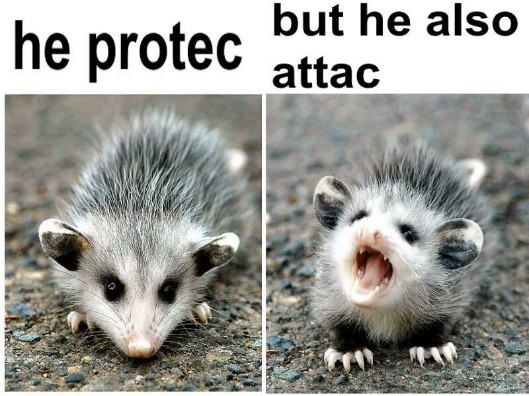Kids crack me up. I’m a Wildlife on Wheels outreach presenter for HMNS, which means I regularly visit schools, daycares and other groups to educate the public about all sorts of animals. Throughout the years I have met multiple children who claim to have anacondas in their backyards, pet crocodiles in their pools, or tigers in their bedrooms. While I cannot verify (or refute) these stories, I can give the students the chance to meet other animals that might not be housed in their yards, pools and bedrooms. It makes my day to see the transition from fear when they first see a snake come out of its carrier to excitement when they realize they actually get to touch it. Giving students a real, tangible connection to wildlife helps build their curiosity so they’ll be more invested in the world around them.

Could this be the illusive pool croc?
Recently, we’ve debuted a new Wildlife on Wheels topic, Venomous vs. Poisonous, and it’s definitely getting a huge reaction from kids and adults alike. I was really excited to launch this new topic so I could hopefully dispel some myths about poisonous, venomous, and supposedly dangerous animals. Here are the top three myths I’d like to cover.
1. Bitey brown recluses – Ironically, the one spider with RECLUSE in its name seems to be bumping into an awful lot of people. I have heard so many stories of people who have been “bitten by a brown recluse”. While some of these may be true, there’s also a good chance that most of these may be misunderstandings or misdiagnoses. For instance,
this report found that “South Carolina physicians diagnosed 478 brown recluse spider bites in 1990 and 738 in 2004”, while there had only been 44 verified brown recluses in the state
since 1953. Unless recluses have a personal vendetta against mankind, I just don’t see those numbers adding up. The Journal of the American Medical Association published this
handy guide to help medical professionals rule out recluse bites, so patients can get the correct treatment for their ailment.

NOT GUILTY!
2. Poisonous snakes – First off, almost NO snakes are poisonous!Rattlesnakes aren’t poisonous! Cottonmouths aren’t poisonous! Cobras aren’t poisonous! Poison is a passive defense mechanism which can be delivered when you lick or touch the toxic animal. Venom may work as a defense mechanism, but is typically used to subdue prey. Venom must be delivered through a bite or sting. In short, poison is ingested, venom is injected. Are there poisonous snakes? You bet your bippy, but they’re really rare! One fun example is the tiger keelback snake. This species eats toads and stores their particular bufadienolide toxins, thus becoming poisonous itself. Pregnant tiger keelback snakes have even been known to
seek out these toads during their pregnancy, to ensure their young are born with this
valuable defense. Aww, isn’t she such a caring, toxic mother?

Donning a clever disguise to avoid predation by the tiger keelback.
3. Opossums spread rabies – While just about any mammal
can get rabies, opossums are far less likely than others to contract the disease. Some researchers theorize that their slightly lower body temperature makes them an inhospitable host for rabies. In fact,
this study reviewed cases reported to the CDC in 2015 and found that there were 5,508 cases of rabies reported in the 50 United States and Puerto Rico that year. Of these 5,508 cases, only
2 of them were from opossums. Why do opossums get the bad rap? Unfortunately their mouth open, hissy defensive behavior gives them the appearance of a rabid animal when they are in fact perfectly healthy. Not only are they probably not rabid, but an opossum can eat up to
5,000 ticks in a season, reducing your chances of getting Lyme disease, which amongst other symptoms could paralyze half of your face. Not a fan of cockroaches?
Opossums eat them. Not a fan of copperheads or rattlesnakes?
Opossums eat those too. Would you like to be vaccinated against snake bites
before they happen?
Opossums might be the key to making that happen. Next time you see this misunderstood marsupial in your back yard, put the shovel down and send him on his way. He’s got critters to snack on.



